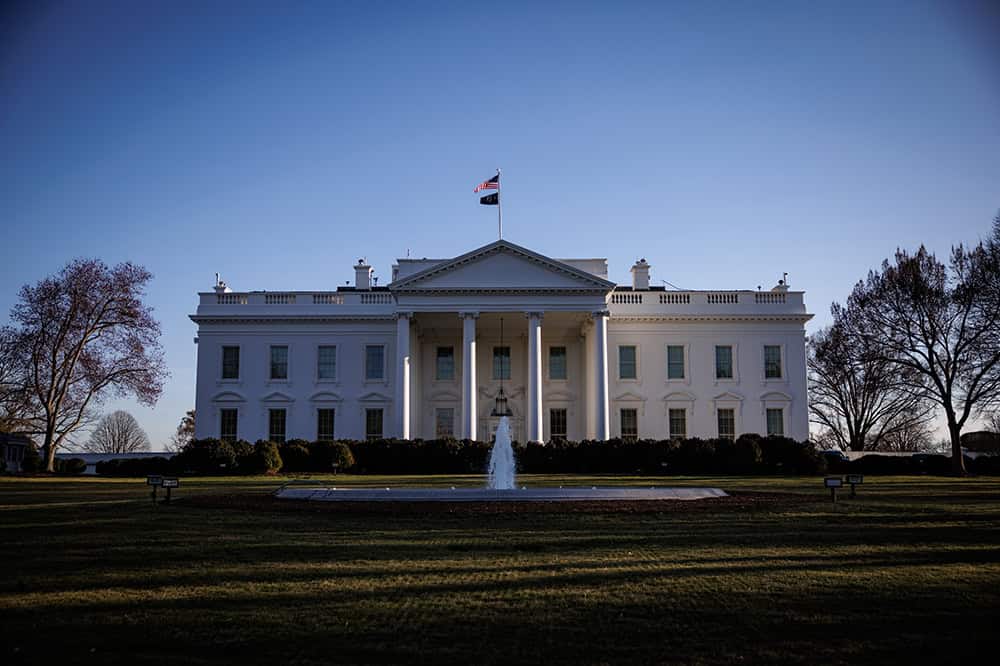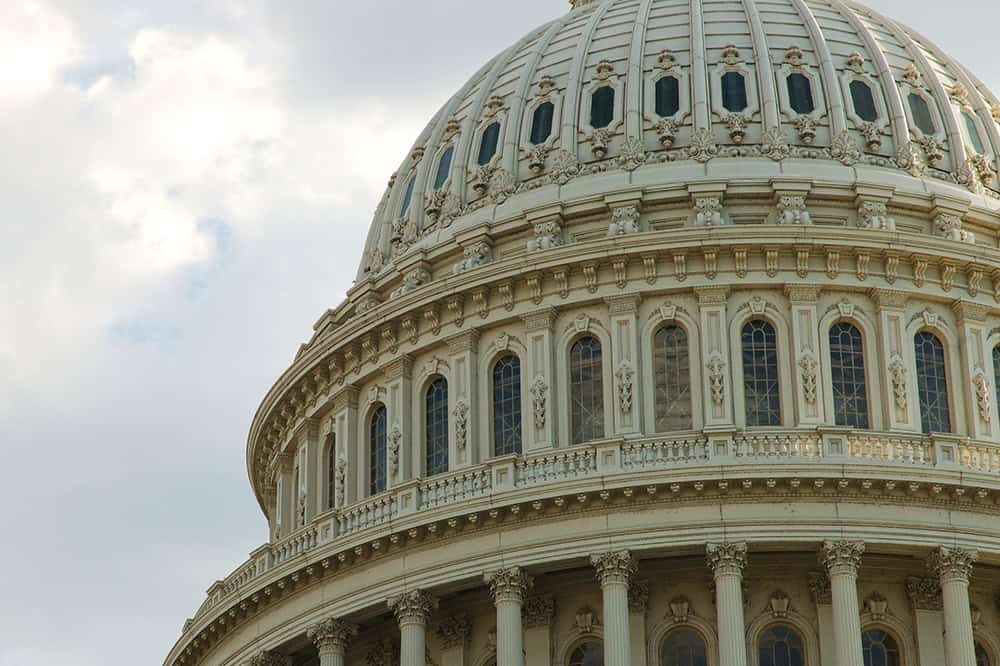Federal budgeting is an annual process that devotes most of its attention to the upcoming fiscal year. That makes the current budget process ill-suited for managing the nation’s long-term fiscal outlook.
While budget process reform alone cannot substitute for political agreement about fiscal policies and priorities, there are many reforms that would help encourage responsible budgeting and improve accountability. Areas of reforms include:
- Adding a long-term focus. Extending the current 10-year “window” that Congress generally uses during the budget process to increase the visibility of the projected effect of lawmakers’ actions on our fiscal future.
- Setting targets. Requiring Congress and the president to set medium- and long-term fiscal goals, then reporting annually on the progress they have made toward those objectives.
- Strengthening enforcement. Adding new or strengthening existing enforcement measures that would help policymakers stay on the path towards their budget targets over longer periods. Naturally, these reforms would have to be flexible enough to accommodate changing economic conditions and new political priorities, but, at the same time, be strong enough to establish and reinforce overall commitment to long-term fiscal sustainability.
- Other reforms. There are a number of budget process reform options frequently discussed by policymakers such as changing the congressional budget resolution into law or adopting a biennial budget process.
Policy Options for Budget Process Reform
Below is a more detailed look at the areas of budget process reform.
Adding a Long-Term Focus
Although the president’s Office of Management and Budget, the Congressional Budget Office, and the Government Accountability Office publish information about the long-term budget outlook, that information has little effect on the annual budget process. The president is only required to estimate the budgetary impact of the administration’s proposed policies for the upcoming fiscal year and subsequent four years. Official estimates of the budgetary impact of congressional action only cover a 10-year period at most. That discourages policy reforms that would involve short-term political and budgetary costs but would improve the long-term outlook. The 10-year window also hides the long-term costs of policies that may look manageable in the shorter term.
Process reforms that require more information about the long-term budget outlook could help lawmakers overcome the current, short-term focus. Some reforms include:
- Extending the time horizon for baseline budget projections and estimates of the budgetary effects of legislation to 25 years instead of the current 10 years.
- Requiring the Congressional Budget Office to evaluate the long-term impact of the president’s budget proposals.
Setting Medium- and Long-Term Fiscal Targets
Although policymakers generally acknowledge that the current projections of rising debt are unsustainable, they do not agree on an appropriate target for our long-term debt. Without such a consensus, it is more difficult to agree on the revenue and spending levels that would achieve a sustainable long-term fiscal outlook.
To encourage lawmakers to focus on improving the budget’s long-term outlook, the budget process could require Congress and the president to establish statutory medium- and long-term targets for the national debt, as the Peterson-Pew Commission on Budget Reform has recommended. Once an agreement is achieved, subsequent president’s budgets and congressional budget resolutions would also be required to include policies for reaching those targets and reporting on a regular basis about their progress toward achieving those goals.
Alternatively, policymakers could agree that the budget shortfall should be stable over the business cycle (that is, run larger deficits when the economy is weak, but reduce them significantly during stronger economic periods). If the total deficit grows more slowly than the economy, debt as a percentage of gross domestic product would decline over time.
Any targets should be set at levels that would be reasonably attainable and flexible enough to allow for unforeseen events, such as economic downturns, national emergencies, and major disasters. That means that targets should be designed to rein in deficits and debt gradually to avoid sudden impacts on the economy and to allow for gradual policy changes that would give Americans time to adjust to resulting changes. Policymakers would also be free to adjust the goals through subsequent budget legislation.
Strengthening Budget Enforcement Provisions
Once policymakers reach an agreement about levels of revenue, spending, deficits and debt, they could use budget enforcement provisions to help keep fiscal policies on the agreed-upon path.
- Scale back budget exemptions. The existing pay-as-you-go (PAYGO) rules, which require any legislated changes to revenues and entitlement programs that increase deficits to be offset by changes to decrease deficits, could be strengthened by scaling back or eliminating the number of programs that are exempt from the PAYGO requirement and subsequent enforcement, or sequestration (across-the-board cuts), action.
- Limit discretionary spending. Statutory limits on discretionary spending, which are in effect through 2021, could be extended further into the future. To increase the likelihood that the caps will be observed, they should be set at realistic levels, based for example, on historic levels. Otherwise, policymakers may try to get around the caps by exempting more spending or by voting to overturn the limits completely.
- Enforceable debt targets. A new enforcement procedure to back up agreed-upon debt targets could be added. As a last resort, this reform could use sequestration — across-the-board cuts — to enforce debt goals to encourage lawmakers to adopt policy changes to meet the targets.
Other Frequently-Mentioned Budget Process Reform Options
- Make congressional budgets into joint resolutions. Change the congressional budget resolution into a joint resolution that would be signed into law by the president, thus providing a means to achieve overall agreement between the president and Congress on a budget blueprint that would guide subsequent legislative activity.
- Change from an annual to a biennial budget process. If Congress and the president had to enact appropriations only in non-election years, it could allow for more bipartisan budget negotiation without the heightened pressure that special interest groups bring to bear during election years. It could also give congressional lawmakers more time to focus on oversight and longer-term policy development and would provide more certainty in the operation of federal activities.
- Create a means to automatically increase revenues. Similar to sequestration provisions currently in place that automatically reduce spending, revenue increases would be triggered if budget targets are missed. Like sequestration, this provision would be designed as such an undesirable last resort that policymakers would be motivated to act to avoid triggering it. It could take the form of an automatic surtax, or it could “trigger off” designated revenue-increasing tax provisions.
- Enhance the president’s authority to rescind funds. Currently, Congress can ignore the president’s request to rescind — or cancel — appropriated funds and allow the funds to be spent. Requiring Congress to vote on the president’s proposed rescissions would strengthen this power.
The annual budget process would almost certainly benefit from reform. However, the fundamental problem is not the budget process itself but the lack of political will to make difficult choices. Without agreement about those choices and tradeoffs, deficits are projected to rise to unsustainable levels in coming decades due to the aging of the population, rising healthcare costs, increasing interest costs, and insufficient revenues to meet existing commitments. Addressing such issues will take political leadership from both parties.
For more about options to reform the budget process, see:
- Committee for a Responsible Federal Budget, Budget Process Reform Options (2018)
- Bipartisan Policy Center, Fixing Fiscal Myopia (2016)
- American Enterprise Institute, Reforming the Budget Process (2014)
- The Brookings Institution, Reforming the Budget: How to fix the Congressional Budget Process (2014)
- The Heritage Foundation, An Analysis of Selected Budget Process Reforms (2014)
- Congressional Research Service, Budget Process Reform: Proposals and Legislative Actions in 2012 (2012)
Image credit: Samuel Corum/Stringer/Getty Images
Further Reading
How Do Quantitative Easing and Tightening Affect the Federal Budget?
The Federal Reserve plays an important role in stabilizing the country’s economy.
Can a Rescissions Package Help Lawmakers Formalize DOGE Cuts?
Rescission packages can serve as a tool for the President and Congress to manage and control government spending through a formal statutory process.
What Is a Continuing Resolution?
A continuing resolution is a temporary funding measure that Congress can use to fund the federal government for a limited amount of time.


